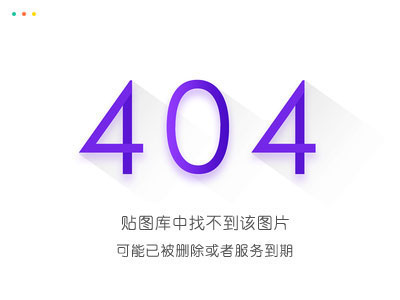传统的SpringMVC项目中,需要在web.xml中配置Contextlistener。ContextLoaderListener是负责引导启动和关闭Spring的Root上下文的监听器。主要将处理委托给ContextLoader和ContextCleanupListener。
类的继承关系。

ContextLoaderListener实现了ServletContextListener接口。该接口主要定义了两个行为:监听上下文创建(contextInitialized)和监听上下文销毁(contextDestroyed)。
ContextLoaderListener只是将方法的处理委托给ContextLoader。
package org.springframework.web.context;import javax.servlet.ServletContextEvent;import javax.servlet.ServletContextListener;public class ContextLoaderListener extends ContextLoader implements ServletContextListener { public ContextLoaderListener() { } public ContextLoaderListener(WebApplicationContext context) { super(context); } //初始化Root WebApplication @Override public void contextInitialized(ServletContextEvent event) { //委托给ContextLoader initWebApplicationContext(event.getServletContext()); } //销毁Root WebApplication @Override public void contextDestroyed(ServletContextEvent event) { //委托给ContextLoader closeWebApplicationContext(event.getServletContext()); //委托给ContextCleanupListener ContextCleanupListener.cleanupAttributes(event.getServletContext()); }}ContextLoader的initWebApplicationContext方法负责创建root web application context。
//初始化root web application contextpublic WebApplicationContext initWebApplicationContext(ServletContext servletContext) { //校验是否已经存在root application, if (servletContext.getAttribute(WebApplicationContext.ROOT_WEB_APPLICATION_CONTEXT_ATTRIBUTE) != null) { throw new IllegalStateException( "Cannot initialize context because there is already a root application context present - " + "check whether you have multiple ContextLoader* definitions in your web.xml!"); } Log logger = LogFactory.getLog(ContextLoader.class); servletContext.log("Initializing Spring root WebApplicationContext"); if (logger.isInfoEnabled()) { logger.info("Root WebApplicationContext: initialization started"); } long startTime = System.currentTimeMillis(); try { // Store context in local instance variable, to guarantee that // it is available on ServletContext shutdown. //创建WebApplicationContext,并保存到变量中,等关闭时使用 if (this.context == null) { this.context = createWebApplicationContext(servletContext); } //如果是ConfigurableWebApplicationContext,则配置上下文并刷新 if (this.context instanceof ConfigurableWebApplicationContext) { ConfigurableWebApplicationContext cwac = (ConfigurableWebApplicationContext) this.context; if (!cwac.isActive()) { // The context has not yet been refreshed -> provide services such as // setting the parent context, setting the application context id, etc if (cwac.getParent() == null) { // The context instance was injected without an explicit parent -> // determine parent for root web application context, if any. ApplicationContext parent = loadParentContext(servletContext); cwac.setParent(parent); } configureAndRefreshWebApplicationContext(cwac, servletContext); } } //在ServletContext中设置属性,表明已经配置了root web application context servletContext.setAttribute(WebApplicationContext.ROOT_WEB_APPLICATION_CONTEXT_ATTRIBUTE, this.context); ClassLoader ccl = Thread.currentThread().getContextClassLoader(); if (ccl == ContextLoader.class.getClassLoader()) { currentContext = this.context; } else if (ccl != null) { currentContextPerThread.put(ccl, this.context); } if (logger.isDebugEnabled()) { logger.debug("Published root WebApplicationContext as ServletContext attribute with name [" + WebApplicationContext.ROOT_WEB_APPLICATION_CONTEXT_ATTRIBUTE + "]"); } if (logger.isInfoEnabled()) { long elapsedTime = System.currentTimeMillis() - startTime; logger.info("Root WebApplicationContext: initialization completed in " + elapsedTime + " ms"); } return this.context; } catch (RuntimeException ex) { logger.error("Context initialization failed", ex); servletContext.setAttribute(WebApplicationContext.ROOT_WEB_APPLICATION_CONTEXT_ATTRIBUTE, ex); throw ex; } catch (Error err) { logger.error("Context initialization failed", err); servletContext.setAttribute(WebApplicationContext.ROOT_WEB_APPLICATION_CONTEXT_ATTRIBUTE, err); throw err; } }该方法主要分为四步:
这四步具体分析如下:
校验的过程比较简单,主要是判断Servlet Context是否已经绑定过WebApplicationContext
createWebApplicationContext()方法负责创建WebApplicationContext对象,主要过程是确定WebApplicationContext类,并实例化:
protected WebApplicationContext createWebApplicationContext(ServletContext sc) { //查找WebApplicationContext的类 Class<?> contextClass = determineContextClass(sc); if (!ConfigurableWebApplicationContext.class.isAssignableFrom(contextClass)) { throw new ApplicationContextException("Custom context class [" + contextClass.getName() + "] is not of type [" + ConfigurableWebApplicationContext.class.getName() + "]"); } //实例化对象 return (ConfigurableWebApplicationContext) BeanUtils.instantiateClass(contextClass); }决定WebApplicationContext类的主要策略是先判断ServletContext是否配置了contextClass属性,如果是,则用该属性指定的类作为WebApplicationContext类,否则则是否默认策略。默认策略是根绝classpath下的ContextLoader.properties中配置的类作为WebApplicatioNCOntext类:
protected Class<?> determineContextClass(ServletContext servletContext) { //优先根据servletContext配置的contextClass属性 String contextClassName = servletContext.getInitParameter(CONTEXT_CLASS_PARAM); if (contextClassName != null) { try { return ClassUtils.forName(contextClassName, ClassUtils.getDefaultClassLoader()); } catch (ClassNotFoundException ex) { throw new ApplicationContextException( "Failed to load custom context class [" + contextClassName + "]", ex); } } //在通过classpath下的`ContextLoader.properties`文件制定的类作为WebApplicationContext类 //默认是XmlWebApplicationContext else { contextClassName = defaultStrategies.getProperty(WebApplicationContext.class.getName()); try { return ClassUtils.forName(contextClassName, ContextLoader.class.getClassLoader()); } catch (ClassNotFoundException ex) { throw new ApplicationContextException( "Failed to load default context class [" + contextClassName + "]", ex); } } }创建WebApplicationContext对象后,ContextLoader会判断是否是ConfigurableWebApplicationContext。
ConfigurableWebApplicationContext拓展了WebApplicationContext的能力。其不仅扩展了自身方法,还继承了ConfigurableApplicationContext接口。

配置与刷新的步骤也正是利用了这些接口提供的能力。
//配置并刷新上下文 protected void configureAndRefreshWebApplicationContext(ConfigurableWebApplicationContext wac, ServletContext sc) { //设置ID if (ObjectUtils.identityToString(wac).equals(wac.getId())) { // The application context id is still set to its original default value // -> assign a more useful id based on available information String idParam = sc.getInitParameter(CONTEXT_ID_PARAM); if (idParam != null) { wac.setId(idParam); } else { // Generate default id... wac.setId(ConfigurableWebApplicationContext.APPLICATION_CONTEXT_ID_PREFIX + ObjectUtils.getDisplayString(sc.getContextPath())); } } //WebApplicationContext绑定Servlet Context wac.setServletContext(sc); String configLocationParam = sc.getInitParameter(CONFIG_LOCATION_PARAM); if (configLocationParam != null) { wac.setConfigLocation(configLocationParam); } // The wac environment's #initPropertySources will be called in any case when the context // is refreshed; do it eagerly here to ensure servlet property sources are in place for // use in any post-processing or initialization that occurs below prior to #refresh ConfigurableEnvironment env = wac.getEnvironment(); if (env instanceof ConfigurableWebEnvironment) { ((ConfigurableWebEnvironment) env).initPropertySources(sc, null); } //自定义上下文初始过程,留给用户的拓展机制 customizeContext(sc, wac); //刷新上下文,加载bean wac.refresh(); }创建流程图如下:
